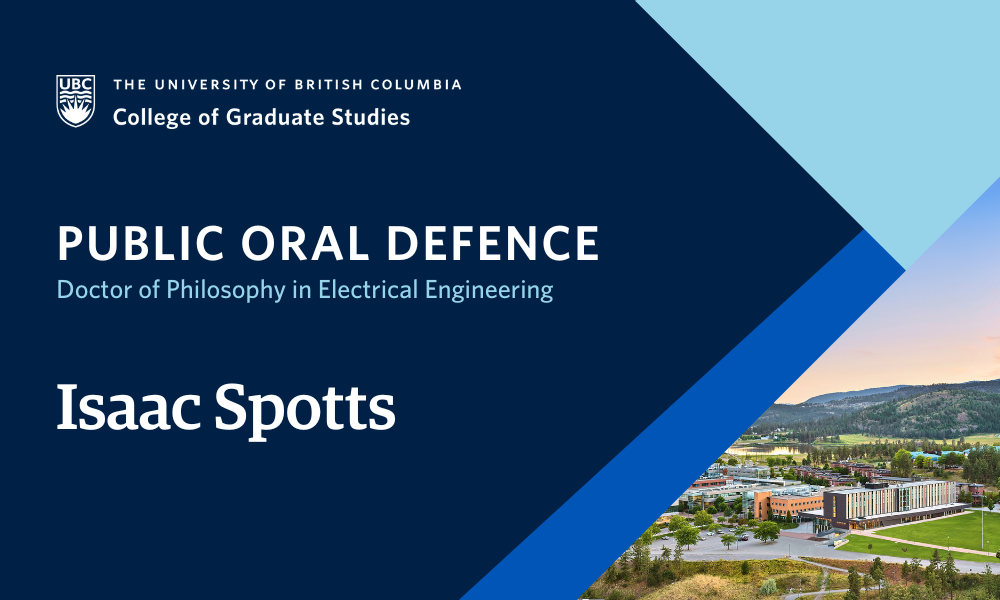
- This event has passed.
Dissertation Defence: Improvement of Ultrafast Experimentation through Optical Delay Lines, Noise Processing, and Enhanced Semiconductor Performance
October 21, 2024 at 2:00 pm - 6:00 pm

Isaac Spotts, supervised by Dr. Christopher Collier, will defend their dissertation titled “Improvement of Ultrafast Experimentation through Optical Delay Lines, Noise Processing, and Enhanced Semiconductor Performance” in partial fulfillment of the requirements for the degree of Doctor of Philosophy in Electrical Engineering.
An abstract for Isaac Spotts’ dissertation is included below.
Examinations are open to all members of the campus community as well as the general public. Please christopher.collier@ubc.ca to receive the Zoom link for this exam.
ABSTRACT
This thesis presents techniques to alleviate deficiencies in ultrafast experimentation. Liquid crystal-assisted optical delay is the first proposed technique. This work improves sensitive time-domain sampling for ultrafast measurements. This work investigates the effectiveness of using a liquid crystal wave modulator to provide the incremental steps in between a coarse movement mechanical delay stage. To quantify the improvement that the liquid crystal wave modulator provides to the ultrafast measurement, an autocorrelation is conducted with the liquid crystal wave modulator present and absent. Ultimately, this liquid crystal wave modulator technique is applied to measure terahertz pulses. The second proposed technique is a computational processing method to reduce the noise floor in terahertz time-domain spectroscopy, thereby reducing the integration time required for a useable signal. The computational processing method is based on Kalman filtering. The results from the computational processing method provide a significant reduction in the noise floor and therefore reduce the required acquisition time significantly. The third proposed method to improve ultrafast measurement is the focal positioning and numerical aperture for injecting charge carriers inside a photoconductive terahertz emitter. The relationship between charge carrier lifetime and terahertz radiation emission is investigated to provide insight into the optimal focusing conditions for a terahertz photoconductive antenna made from low-temperature grown gallium arsenide. Overall, this thesis demonstrates three methods to improve the measurement of ultrafast systems, with an emphasis on terahertz time-domain spectroscopy.